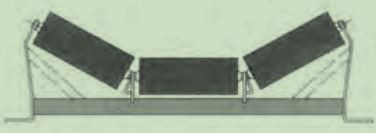 Afrikaans
Afrikaans  Albanian
Albanian  Amharic
Amharic  Arabic
Arabic  Armenian
Armenian  Azerbaijani
Azerbaijani  Basque
Basque  Belarusian
Belarusian  Bengali
Bengali  Bosnian
Bosnian  Bulgarian
Bulgarian  Catalan
Catalan  Cebuano
Cebuano  Corsican
Corsican  Croatian
Croatian  Czech
Czech  Danish
Danish  Dutch
Dutch  English
English  Esperanto
Esperanto  Estonian
Estonian  Finnish
Finnish  French
French  Frisian
Frisian  Galician
Galician  Georgian
Georgian  German
German  Greek
Greek  Gujarati
Gujarati  Haitian Creole
Haitian Creole  hausa
hausa  hawaiian
hawaiian  Hebrew
Hebrew  Hindi
Hindi  Miao
Miao  Hungarian
Hungarian  Icelandic
Icelandic  igbo
igbo  Indonesian
Indonesian  irish
irish  Italian
Italian  Japanese
Japanese  Javanese
Javanese  Kannada
Kannada  kazakh
kazakh  Khmer
Khmer  Rwandese
Rwandese  Korean
Korean  Kurdish
Kurdish  Kyrgyz
Kyrgyz  Lao
Lao  Latin
Latin  Latvian
Latvian  Lithuanian
Lithuanian  Luxembourgish
Luxembourgish  Macedonian
Macedonian  Malgashi
Malgashi  Malay
Malay  Malayalam
Malayalam  Maltese
Maltese  Maori
Maori  Marathi
Marathi  Mongolian
Mongolian  Myanmar
Myanmar  Nepali
Nepali  Norwegian
Norwegian  Norwegian
Norwegian  Occitan
Occitan  Pashto
Pashto  Persian
Persian  Polish
Polish  Portuguese
Portuguese  Punjabi
Punjabi  Romanian
Romanian  Russian
Russian  Samoan
Samoan  Scottish Gaelic
Scottish Gaelic  Serbian
Serbian  Sesotho
Sesotho  Shona
Shona  Sindhi
Sindhi  Sinhala
Sinhala  Slovak
Slovak  Slovenian
Slovenian  Somali
Somali  Spanish
Spanish  Sundanese
Sundanese  Swahili
Swahili  Swedish
Swedish  Tagalog
Tagalog  Tajik
Tajik  Tamil
Tamil  Tatar
Tatar  Telugu
Telugu  Thai
Thai  Turkish
Turkish  Turkmen
Turkmen  Ukrainian
Ukrainian  Urdu
Urdu  Uighur
Uighur  Uzbek
Uzbek  Vietnamese
Vietnamese  Welsh
Welsh  Bantu
Bantu  Yiddish
Yiddish  Yoruba
Yoruba  Zulu
Zulu pu pulley
Understanding PU Pulleys An Overview of Their Structure and Applications
PU pulleys, or polyurethane pulleys, are specialized components widely utilized in various mechanical systems, especially in the fields of industrial machinery, automotive engineering, and robotics. Their unique material properties and design make them highly effective for specific applications where durability, low weight, and efficiency are paramount.
What is a PU Pulley?
A PU pulley is typically made from polyurethane, a versatile polymer known for its resilience, flexibility, and resistance to wear and tear. Unlike traditional materials like metal or plastic, polyurethane offers a combination of hardness and elasticity. This property allows PU pulleys to operate smoothly under high loads while maintaining their shape and functionality over time.
Key Features and Advantages of PU Pulleys
1. Durability One of the standout features of PU pulleys is their exceptional durability. They can withstand harsh environmental conditions, including exposure to chemicals, UV light, and extreme temperatures, making them ideal for outdoor or industrial applications.
2. Noise Reduction PU pulleys generate less noise compared to metal options, making them suitable for environments where sound levels must be minimized. This is particularly beneficial in settings such as manufacturing plants or warehouses where loud machinery can lead to worker distraction or discomfort.
3. Lightweight PU pulleys are significantly lighter than their metal counterparts, reducing the overall weight of machinery and improving operational efficiency. This quality is especially advantageous in applications like robotics, where weight reduction can enhance performance and mobility.
4. Cost-Effective While PU materials can sometimes be more expensive initially, their longevity and reduced maintenance needs often translate to lower lifecycle costs. Users find that investing in PU pulleys can yield significant savings over time.
pu pulley

Applications of PU Pulleys
PU pulleys have a wide array of applications across different industries. Here are a few notable examples
- Manufacturing In assembly lines, PU pulleys are employed in conveyor systems to facilitate the smooth movement of products. Their durability ensures minimal downtime, contributing to increased productivity.
- Automotive In the automotive industry, PU pulleys are often used in power transmission systems. They are perfect for applications requiring high tensile strength and flexibility, such as timing belts and tensioners.
- Robotics The lightweight and flexible nature of PU pulleys makes them an excellent choice for robotics. They are frequently used in robotic arms and automated systems to enhance movement accuracy and efficiency.
- Agriculture PU pulleys are also found in agricultural equipment, where they can withstand exposure to various environmental factors while supporting the efficient operation of machines like tractors and harvesters.
Conclusion
In summary, PU pulleys exemplify the intricate balance between material science and engineering application. Their unique attributes such as durability, lightweight design, and noise reduction capabilities make them a preferred choice in numerous industrial sectors. As technology continues to advance, the role of PU pulleys in enhancing machinery efficiency and reliability is likely to grow. By understanding their features and advantages, industries can make informed decisions that contribute to better operational performance and long-term cost savings. As we move forward, the continued exploration of innovative materials like polyurethane will undoubtedly pave the way for even more advanced pulley systems, further revolutionizing the way we approach mechanical engineering challenges.
-
Revolutionizing Conveyor Reliability with Advanced Rubber Lagging PulleysNewsJul.22,2025
-
Powering Precision and Durability with Expert Manufacturers of Conveyor ComponentsNewsJul.22,2025
-
Optimizing Conveyor Systems with Advanced Conveyor AccessoriesNewsJul.22,2025
-
Maximize Conveyor Efficiency with Quality Conveyor Idler PulleysNewsJul.22,2025
-
Future-Proof Your Conveyor System with High-Performance Polyurethane RollerNewsJul.22,2025
-
Driving Efficiency Forward with Quality Idlers and RollersNewsJul.22,2025





























